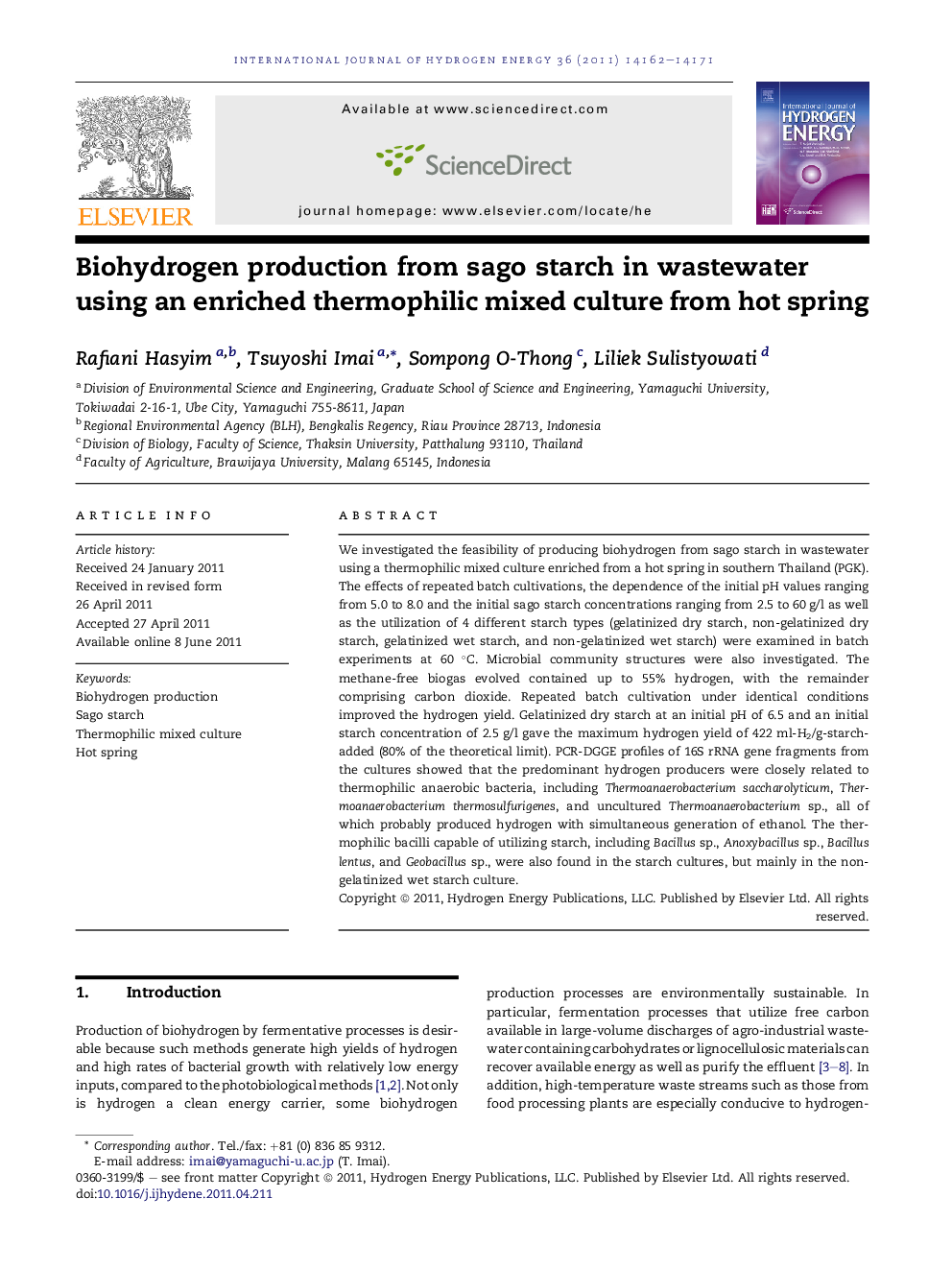| کد مقاله | کد نشریه | سال انتشار | مقاله انگلیسی | نسخه تمام متن |
|---|---|---|---|---|
| 1278772 | 1497572 | 2011 | 10 صفحه PDF | دانلود رایگان |

We investigated the feasibility of producing biohydrogen from sago starch in wastewater using a thermophilic mixed culture enriched from a hot spring in southern Thailand (PGK). The effects of repeated batch cultivations, the dependence of the initial pH values ranging from 5.0 to 8.0 and the initial sago starch concentrations ranging from 2.5 to 60 g/l as well as the utilization of 4 different starch types (gelatinized dry starch, non-gelatinized dry starch, gelatinized wet starch, and non-gelatinized wet starch) were examined in batch experiments at 60 °C. Microbial community structures were also investigated. The methane-free biogas evolved contained up to 55% hydrogen, with the remainder comprising carbon dioxide. Repeated batch cultivation under identical conditions improved the hydrogen yield. Gelatinized dry starch at an initial pH of 6.5 and an initial starch concentration of 2.5 g/l gave the maximum hydrogen yield of 422 ml-H2/g-starchadded (80% of the theoretical limit). PCR-DGGE profiles of 16S rRNA gene fragments from the cultures showed that the predominant hydrogen producers were closely related to thermophilic anaerobic bacteria, including Thermoanaerobacterium saccharolyticum, Thermoanaerobacterium thermosulfurigenes, and uncultured Thermoanaerobacterium sp., all of which probably produced hydrogen with simultaneous generation of ethanol. The thermophilic bacilli capable of utilizing starch, including Bacillus sp., Anoxybacillus sp., Bacillus lentus, and Geobacillus sp., were also found in the starch cultures, but mainly in the non-gelatinized wet starch culture.
► The enriched PGK culture from a hot spring can produce hydrogen from sago starch.
► The methane-free biogas evolved contained up to 55% hydrogen.
► Gelatinized starch at initial pH of 6.5 and initial concentration of 2.5 g/l gave the maximum yield.
► Predominant hydrogen producers were closely related to Thermoanaerobacterium sp.
► Thermophilic bacilli capable of utilizing starch were also found.
Journal: International Journal of Hydrogen Energy - Volume 36, Issue 21, October 2011, Pages 14162–14171